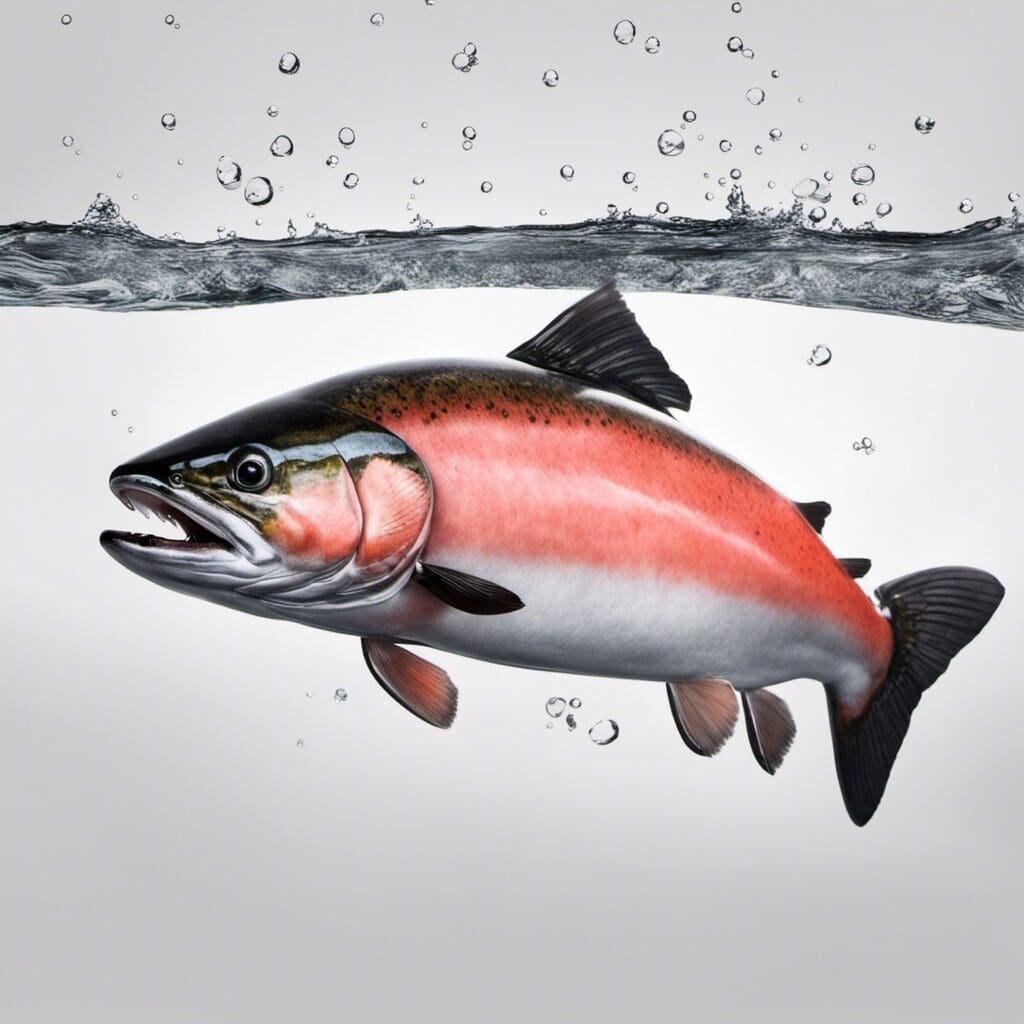Introduction
The Coho Salmon (Oncorhynchus kisutch) is a species of anadromous fish that belongs to the Salmonidae family.
Conservation Status
As per data from the International Union for Conservation of Nature (IUCN), the Coho Salmon is currently listed as ’Vulnerable’. Conservation efforts for this species involve habitat restoration, careful management of fishing licenses, and breeding programs.
Statistics
| Feature | Average | Range |
|---|---|---|
| Length | 70 cm | 38 to 85 cm |
| Weight | 3.6 kg | 1 to 7.5 kg |
| Average Lifespan | 3 years | N/A |
Distribution
Regions/Countries
The Coho Salmon is native to the northern Pacific Ocean, from Hokkaido, Japan, and eastern Russia, around the Bering Sea to mainland Alaska, and south to Monterey Bay, California. It can be found throughout the western United States, Canada, Russia, and Japan.
Migration Patterns
Coho Salmon are well-known for their incredible migration patterns, traveling from their ocean habitat up rivers and streams to spawn. This usually occurs from October to early December.
Habitats
Coho Salmon inhabit both fresh and saline waters. They can inhabit depths from zero to 274 meters and are usually found in the temperature range of 6.5 – 15.6°C.
When and Where to See
For those interested in observing or fishing Coho Salmon, late summer and fall are the best times. These salmon are more active during the dawn and dusk hours.
Best Fishing Locations
Some of the best places to catch Coho Salmon include:
- Kenai River, Alaska, USA
- Dean River, British Columbia, Canada
- Skeena River, British Columbia, Canada
- Salmon River, Idaho, USA
- Kitimat River, British Columbia, Canada
- Elwha River, Washington, USA
How to Catch
Preferred Bait or Lures
Coho Salmon can be caught using a variety of baits and lures. Spinners, spoons, plugs, and fresh or frozen herring are all effective.
Fishing Techniques
Common techniques used to catch Coho Salmon include trolling, fly fishing, and plunking.
Identification Guide
Coho Salmon are medium-sized salmonids and recognized by their bright silver skin and dark blue backs. During spawning, they acquire reddish-maroon to dark green color, males develop a hooked snout, and both genders gain sharp teeth.
Culinary
How to Cook
Coho Salmon can be grilled, broiled, pan-fried, roasted, or smoked. They have a rich and delicate flavor that pairs well with a variety of ingredients.
Nutritional Information
Coho Salmon is a rich source of protein, Vitamin D, and omega-3 fatty acids.
Additional Information
Behavior
Coho Salmon are opportunistic feeders, eating a diet primarily made up of small aquatic insects, crustaceans, and small fish.
Predators and Threats
Humans, bears, birds of prey, and larger fish are known predators of Coho Salmon. Intensive fishing and habitat degradation are the main human-induced threats.
Cultural/Historical Significance
Throughout history, salmon, including Coho salmon, played a significant part in the culture and diet of several indigenous tribes in the Northern US and Canada.
References and Further Reading
For more information about the Coho Salmon, check out these resources:
- U.S. Fish & Wildlife Service
- NOAA Fisheries

